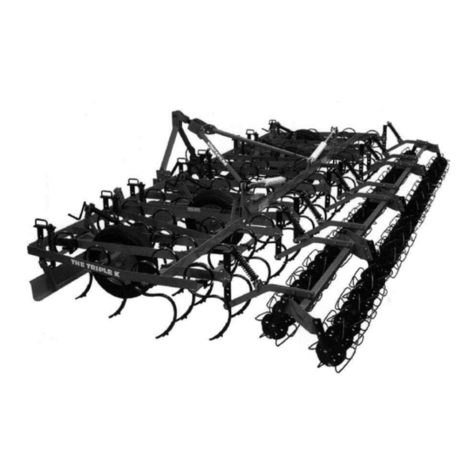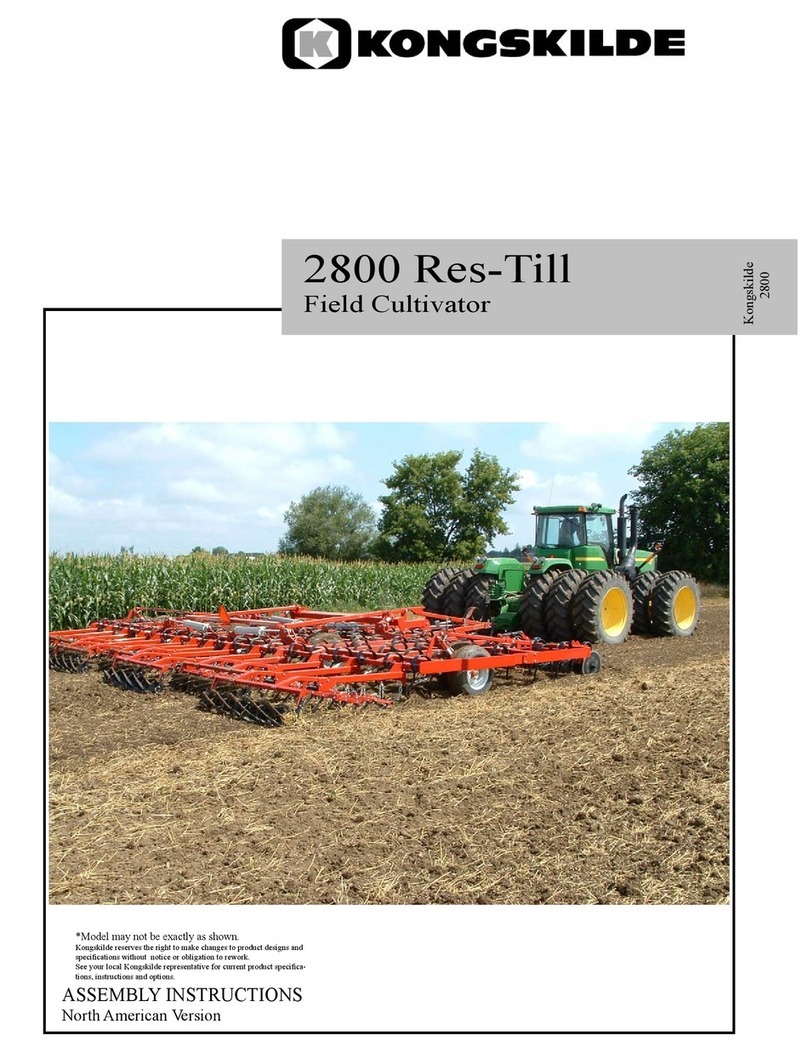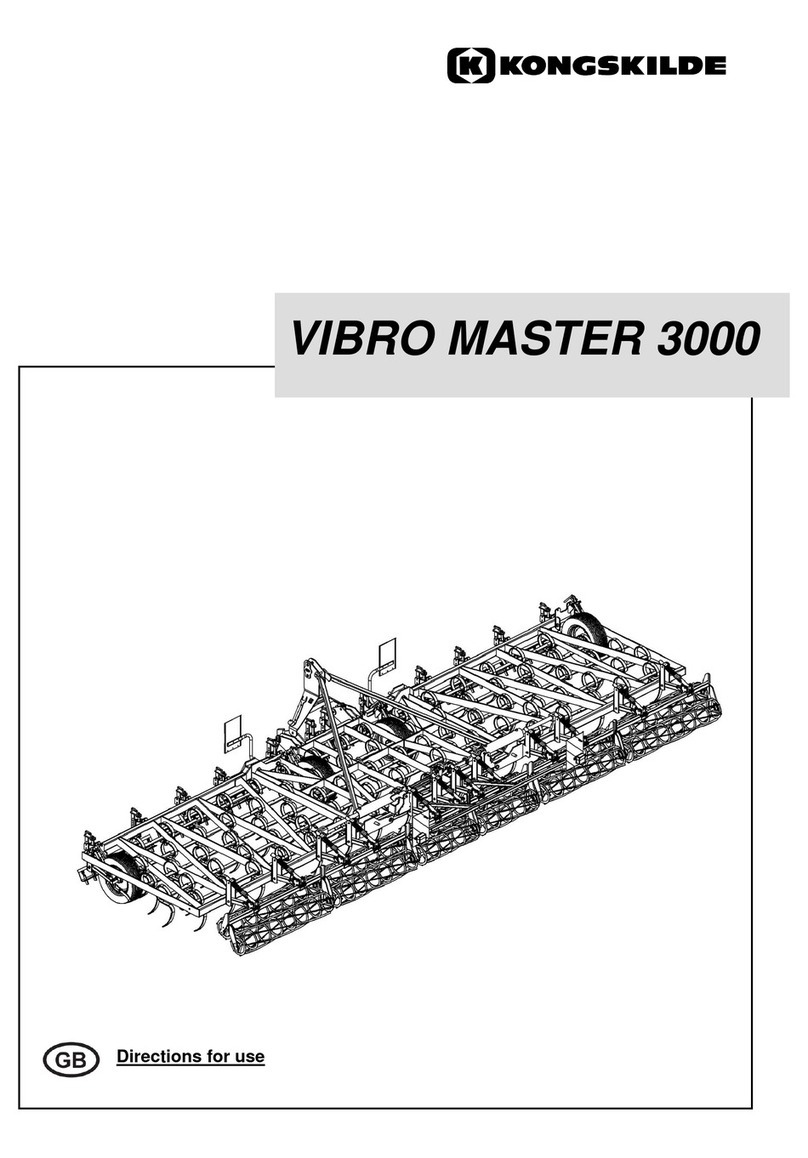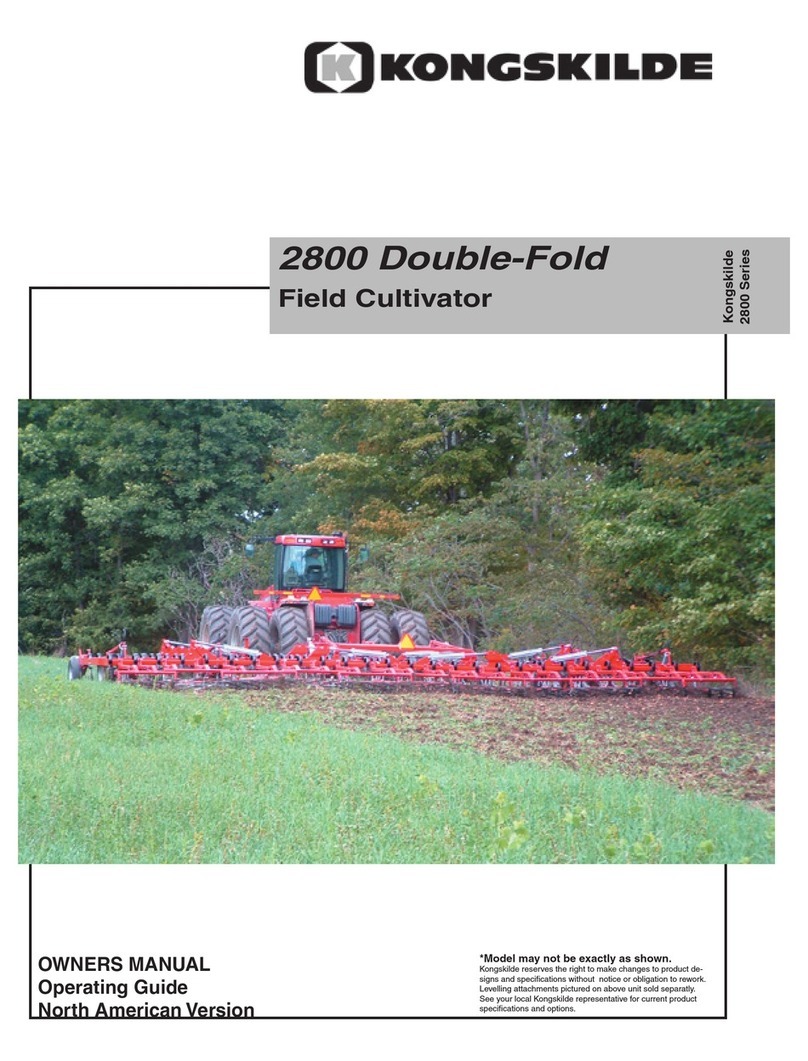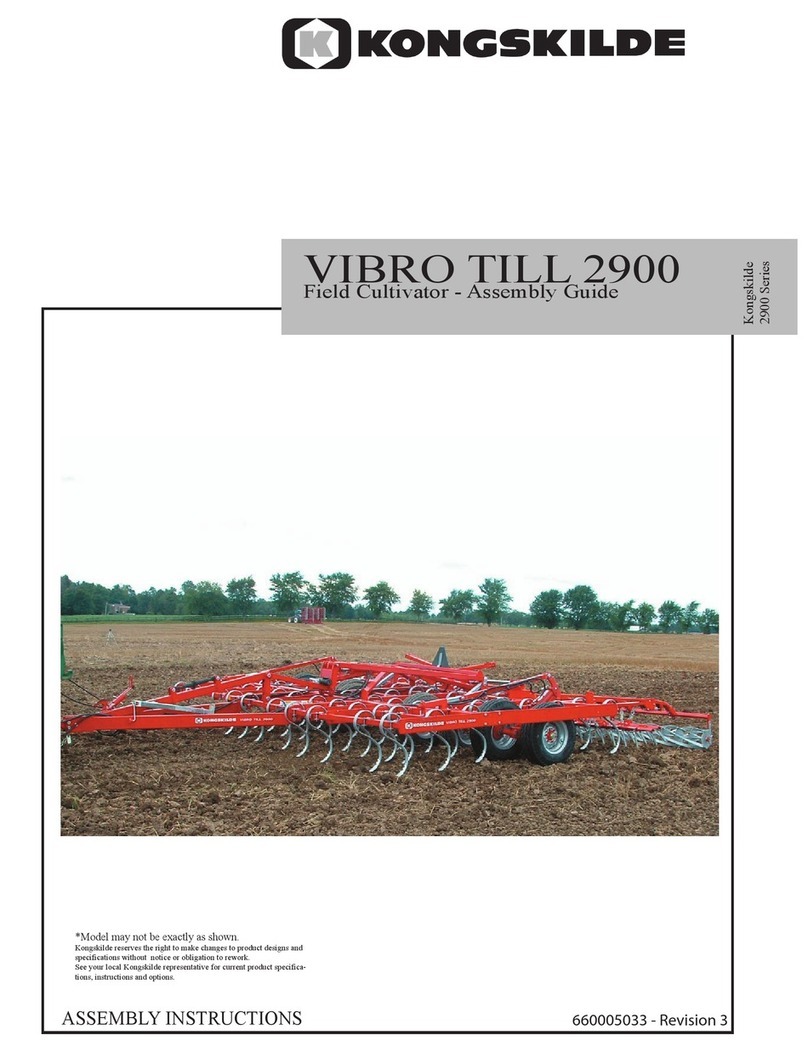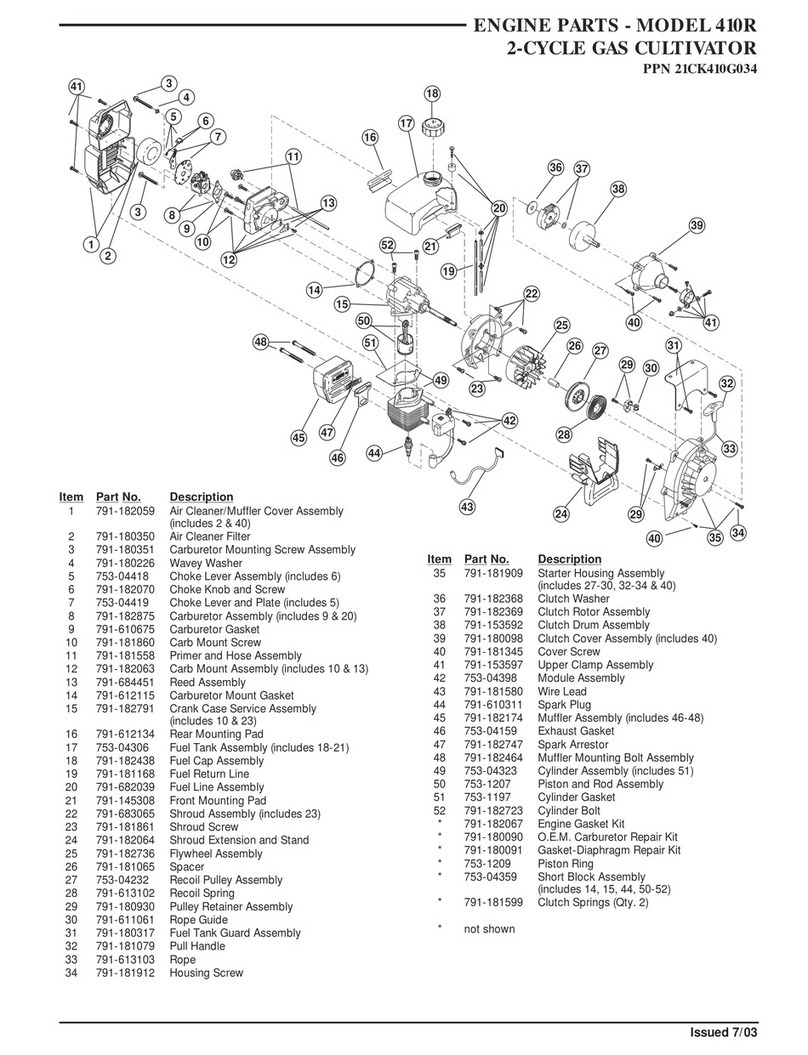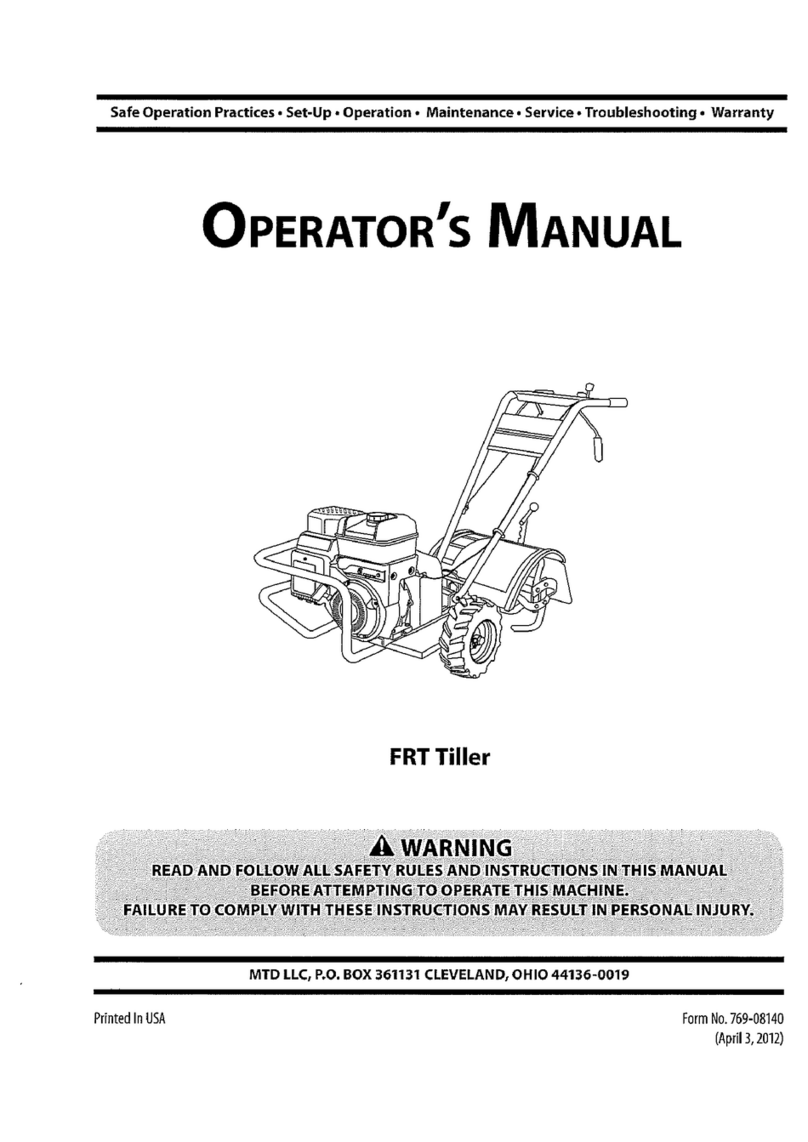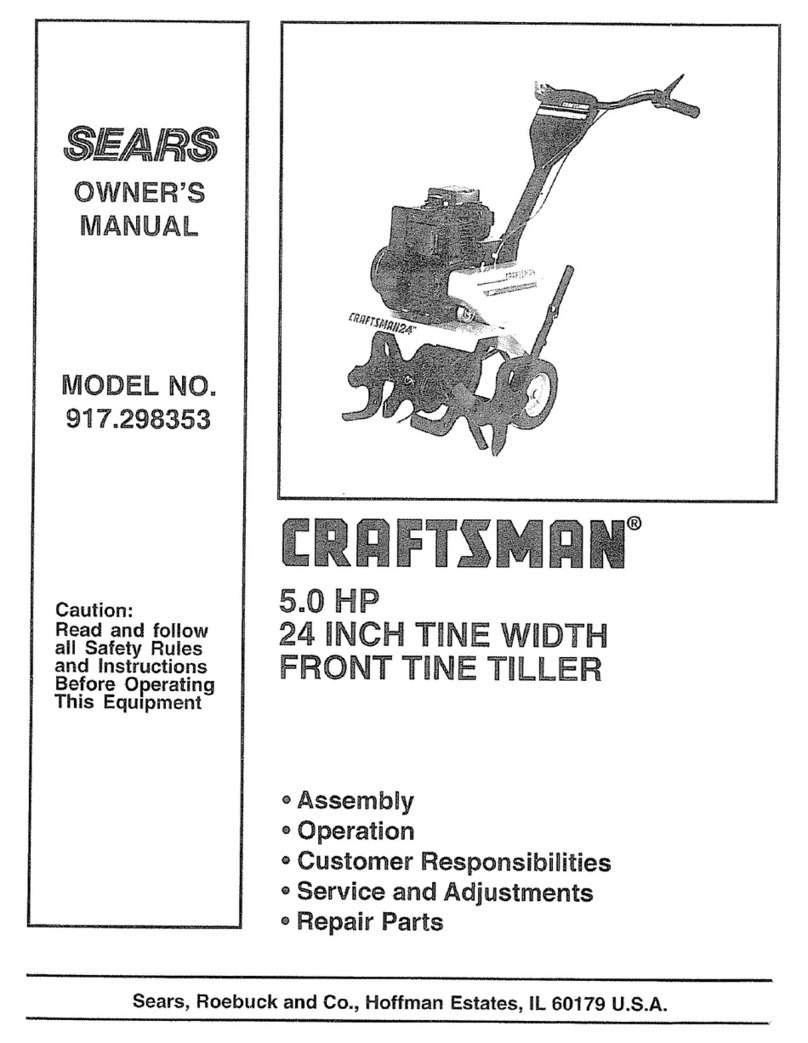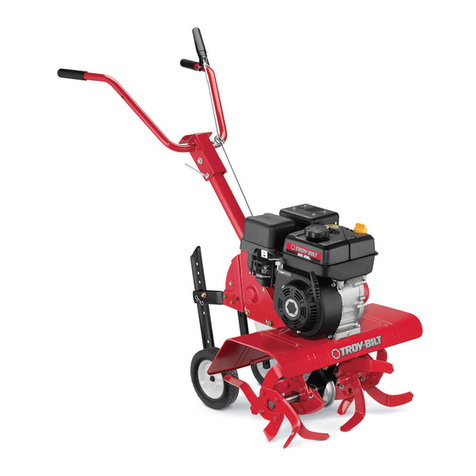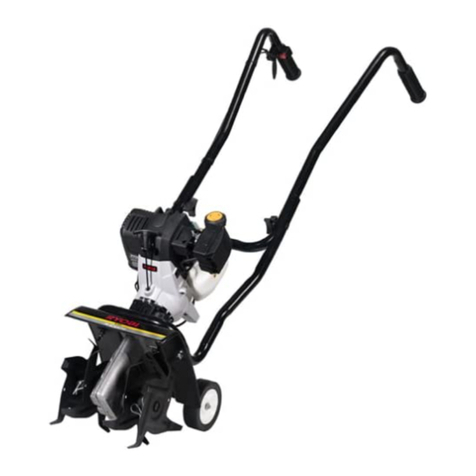Kongskilde 2800 SERIES User manual

OWNERS MANUAL
Warranty Certificate
Operating Guide
2800 SERIES
FIELD CULTIVATORS
*Model may not be exactly as shown.
Kongskildereservestherighttomakechangestoproductdesigns
andspecificationswithout noticeorobligationtorework.
Kongskilde
2800Series

2
TABLE OF CONTENTS
INTRODUCTION 3
PRODUCT SAFETY PRECAUTIONS 5
SAFETY DEVICES 7
OPERATING INSTRUCTIONS 8
FIELD LEVELLING PROCEDURE 10
OPERATING ADJUSTMENTS 11
PARKING AND STORAGE 14
MAINTENANCE & LUBRICATION 15
HYDRAULICS AND HOSE DIAGRAMS SECTION SP
TROUBLE SHOOTING CHART 18

3
INTRODUCTION
This manual has been developed to assist you in the operating and servicing of your new
Kongskilde product. Read it carefully: it will provide you with information that will enable you to
obtain years of dependable service.
If your did not receive a warranty registration form, contact your dealer. He will be able to obtain
one for you. It is important that the warranty registration be completed and returned to validate
the warranty protection period.
Beforeattemptingtooperatethisequipment,read,andunderstandthismanualfullyandfollowall
safety precautions. In addition, make sure that every individual who operates or works with this
equipment is familiar with these instructions. Observation of these safety precautions will make
your farm a safer place to work. Read carefully and understand all operating instructions before
attempting to operate the machine.
SAFETY PRECAUTIONS
This safety symbol, found throughout this manual, is used to call your attention to instructions
concerning the personal safety of the owner or operator.
Look for this symbol to point out safety precautions. It meansATTENTION! Become
ALERT! Your safety is involved.

4
Safety Decals and Hazard Alerts:
The key words - DANGER, WARNING and CAUTION used alone or in combination with the
Safety Hazard Alert Symbol used in this Operators Manual and on Safety Decals located on the
framework of the machine, are used to identify hazards on or near the implement.
Safety Instructions indicate procedures which must be followed to avoid hazards.
Hazard Alerts are identified by the key word, and the symbol:
DANGER -AnimmediatehazardwhichWILLresultin severe personalinjuryor death if the proper
precautions are not taken.
WARNING - A hazard or unsafe practice which COULD result in personal injury or death if the
proper precautions are not taken.
CAUTION - A hazard or unsafe practice which COULD result in personal injury or in product or
property damage if the proper precautions are not taken.
Safety Decal Locations:
Safety Decals are located on the framework of the implement. The specifiic locations are chosen
to provide optimal visibility to the operator or bystanders. In the case of hidden or obstructed
hazardsorsafetyprecautions,thedecalsmay belocated onor nearthe hazard,or otherconvenient
locations near hook-up points, adjustment devices or service points frequently visited by the
operator.
Please read and obey all safety decals on the machine. Ensure they are kept clean and in
good condition. Kongskilde is committed to safety and provides replacement safety decals and
operator manuals at no charge if they become lost, damaged or illegible.
Eachsafety decalisidentified by apart number,and areavailablethrough your KongskildeDealer.
IMPORTANT NOTICE:
Kongskilde cannot anticipate every possible circumstance that might involve a hazard with this
product.Thehazardalertsandsafetyinstructionsinthispublication andon theproductaretherefore
not all inclusive. If a tool, procedure, work method or operating technique not specifically
recommended by Kongskilde is used, you must satisfy yourself that is is safe for you and others.
You should ensure that the implement will not be damaged or made unsafe by the operation,
maintenance or repair procedures you choose.
Kongskilde will not be held responsible for any unauthorized modifications made to this
product and will immediatly void the warranty coverage.

5
PRODUCT SAFETY PRECAUTIONS
1. Read the owner’s manual.
2. Make certain all safety decals, reflectors and SMV signs are applied to your unit.
3. IMPORTANT NOTE: This unit has a narrow transport width and a high centre of gravety and
may pose a tipping hazard when folded for transport. Do not transport over 20 M.P.H. and
reduce speed when transporting or turning the cultivator on uneven ground or when travelling
on public roadways.
4. Always use an approved safety tow chain and draw pin, and make sure that all wing fold lock
pins and the wheel cylinder transport locks are secured before transporting.
5. Theoperator is responsibleat alltimesto complywithall stateandlocal lawswhentransporting
large or oversized implements on public or private roadways. Careful consideration must be
given in order to prevent accidents with other vehicles and avoid coming in contact with
obstacles such as: bridges, tunnels, overpasses, guard rails, road signs, traffic lights, power
lines, public utilities, and other structures that may be encountered along the way. In some
jurisdictions the operator may be required to obtain special permits or arrange for escorts
before transporting oversized equipment. Kongskilde is not liable for personal or property
damagecaused by inappropriate, unauthorized orunsafetransport or operation ofequipment.
6. Make sureallwheel bolts are secure andcheckthat the tires are ingoodcondition and inflated
properly before attempting to move the implement on public roadways.
7. IMPORTANT NOTE: Some larger models of 2800 Series cultivators may exceed local height
regulations for safe transporting on public roadways. The operator is responsible at all times
toinsurethe safe transport of the cultivator along the chosenroute.Takecare, especially when
transporting, folding or unfolding the implement around power lines. Serious injury or death to
the operator or bystanders may result through direct or indirect contact with power lines.

6
8. Make sure that the tractor is shifted into park before getting out to remove transport locks and
wing fold lock pins. Never remove wing lock pins or wheel transport locks when the implement
is sitting on uneven ground where tipping could occur.
9. Never remove transport lockout devices or unfold the unit unless cylinders are completely full
of oil. Failure to properly charge the folding hydraulics with oil could allow the wings to free fall
when unfolding, causing damage to the equipment and possible injury to the operator or
bystanders. Never fold the cultivator wings by any mechanical method! Always charge the
hydraulic system first and use it to fold and unfold the wings. Stand clear of the machine and
watch for overhead hazards or objects in the wing-fall zone when folding and unfolding.
10.Neverunfold when there arebystandersin the areaofthe wing fall zone.Becertain all persons
are clear of working area in and around the machine whenever folding, unfolding, raising or
lowering the machinery or in any way using the hydraulic system.
11.Never crawl under the machine to make repairs or adjustments or replace tines and shares,
etc… unless you have properly blocked and supported the cultivator frame. The cultivator
must be secured in a fixed position in order to prevent it from moving or falling before making
any attempt to work underneath.
12.Take care when changing shares orremovingsharebolts as the edges can becomeextremely
sharp when worn.
13.Be alert when walking around the machinery in the folded transport position to avoid walking
into the point of a shank or sweep. Severe head or body injury could result.
14.Regularly check wheel bolts for tightness and periodically check all other nuts and bolts and
secure if loose.
15.Establish a good routine for regular inspection, lubrication and maintenance in order to keep
the machine in good operating condition.

7
SAFTEY DEVICES FOR
Folding and Transporting Implements:
WHEEL LOCK FOR TRANSPORT CYLINDERS
Insertasafetylockoverthecentresectionmaster cylinder
rod and fasten the pins. Slowly ease the cultivator down
until the wheel lock is wedged firmly in place.
When cultivating the safety lock should be stored in the
tractor box or in a place that will not interfere with the
safe operation of the equipment.
LOCK THE WINGS FOR SAFE TRANSPORT
Whenthe wings are raised and foldedfortransport,lock
thewings in the transport position withthewingfold lock
pins shown. The lock pins must also be secured with
the lynch pins provided. Proper installation of the wing
lock pins will prevent the wings from falling
uncontrollably during transport if a problem occurs with
the hydraulic system.
SAFETY CHAIN, SMV SIGN AND REFLECTORS
Attachthe safety tow chain and makesurethatthe SMV
sign and reflectors supplied are installed on the unit
before transporting.

8
OPERATING INSTRUCTIONS
1. When hooking to the tractor always use an
approved draw pin. Secure the draw pin in
place with a safety pin (or other locking
device). The tractor and cultivator should
also be connected together with an
approved safety chain.
2. Make sure that the rear jackisraisedbefore
moving the cultivator.
3. Connectthe cultivator’shydrauliclines tothe
tractor. Note that the 3/8” lines activate the
wingfold hydraulicsand the½” linesactivate
the wheel lift hydraulics.
4. Extend the master wheel lift cylinder and
removetransportlock fromthecentrewheel
cylinder rod.
5. Remove the wing lock pins and activate the
hydraulics to lower the wings. Check to see
that no observers or obstructions are in the
path of the wings!
6. For proper field operation the wing fold
cylindersmust befullyextended to allowthe
wings to float.

9
7. Level the cultivator for the tractor draw bar
height and set the working depth by
following the procedure outlined in later in
this manual under Operating Adjustments.
8. Periodically lift the machine completely out
of the ground (or when turning at the end of
thefield).Fullyextendthecylindersand hold
the remote lever briefly. This rephases the
wheel cylinders and keeps the wings at a
uniform working depth with the centre
section.
9. Try to avoid making sharp turns when
workingthe soil.Turningwiththe tinesinthe
ground can cause high stress levels in the
cultivatorframe andtwists thetines, causing
prematurefailure.Sharp turnsare especially
stressful on the wide wing fold models, as
the wing on the inside of the turn may
actually try to move backwards in the soil!
Lifting the cultivator helps to reduce stress
on the cultivator tines and framework.

10
FIELD LEVELLING PROCEDURE OVERVIEW
1. Set the working depth of the cultivator as described in step 4 of the operating adjustments.
2. Cultivate a short distance and stop. Level the cultivator in the fore aft direction using the
procedure in step 3, of the operating adjustments.
3. Adjust the wheelcylindertowers on the wings according tostep2in the operating adjustments
in order to level the wings from side to side with the centre section.
4. Repeat step 2 & 3 until you are satisfied that all the tines are working the soil at a uniform
depth.
5. Set the height of the gauge wheels in order to distribute the load evenly across the front of the
cultivator and to help maintain cultivating depth accuracy. See step 6 of the operating
adjustments.
NOTE:The gauge wheels should notbeusedtoset the working depth of the tines nor arethey
designed to carry the weight of the machine. They are provided to ensure depth accuracy is
maintained in uneven field conditions and should only have light contact with the surface of
theground.
6. Use the Mechanical Stroke Control on the master cylinder, according to step 5 in the operating
adjustments, whenever you need to adjust the working depth of the cultivator from the original
mechanicaldepthsetting of the wheel tower sliders. Remember to re-adjustthegaugewheels
after changing the working depth setting of the machine.
Other manuals for 2800 SERIES
2
Table of contents
Other Kongskilde Tiller manuals
Popular Tiller manuals by other brands
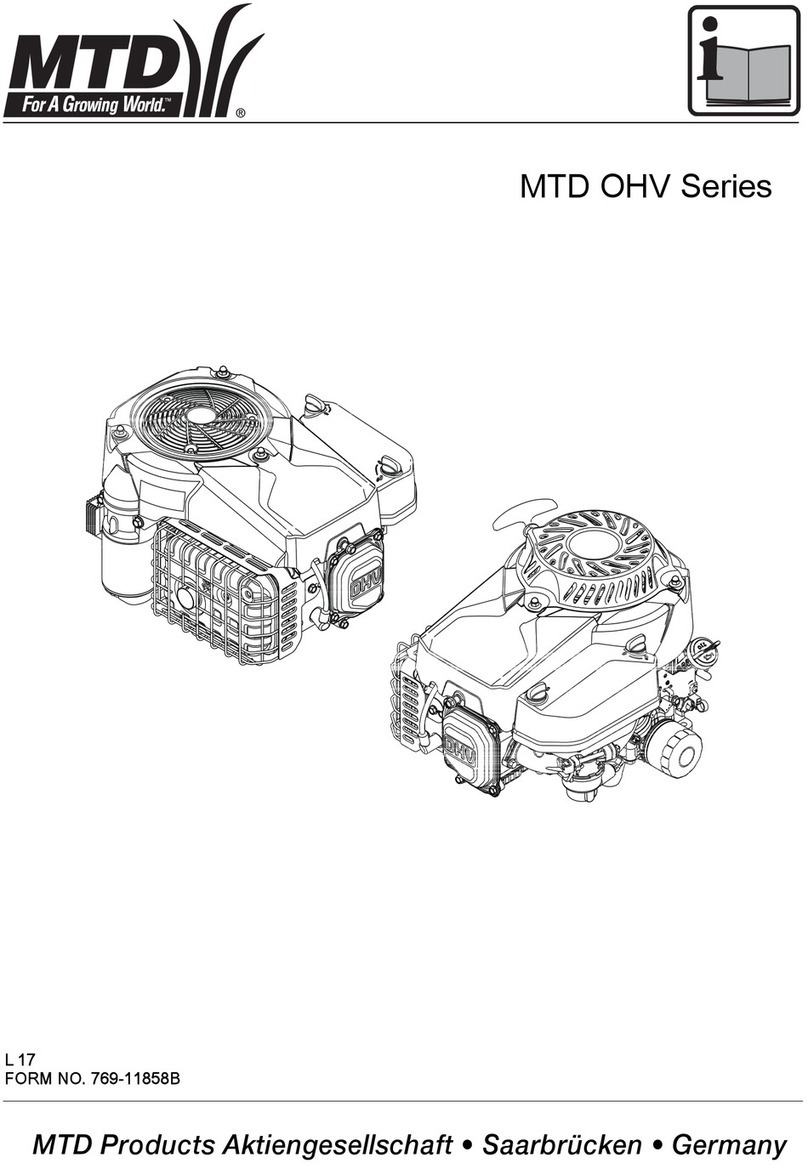
MTD
MTD OHV Series Original operating instructions

YAT
YAT YT5601-01 Assembly, Use, Maintenance Manual
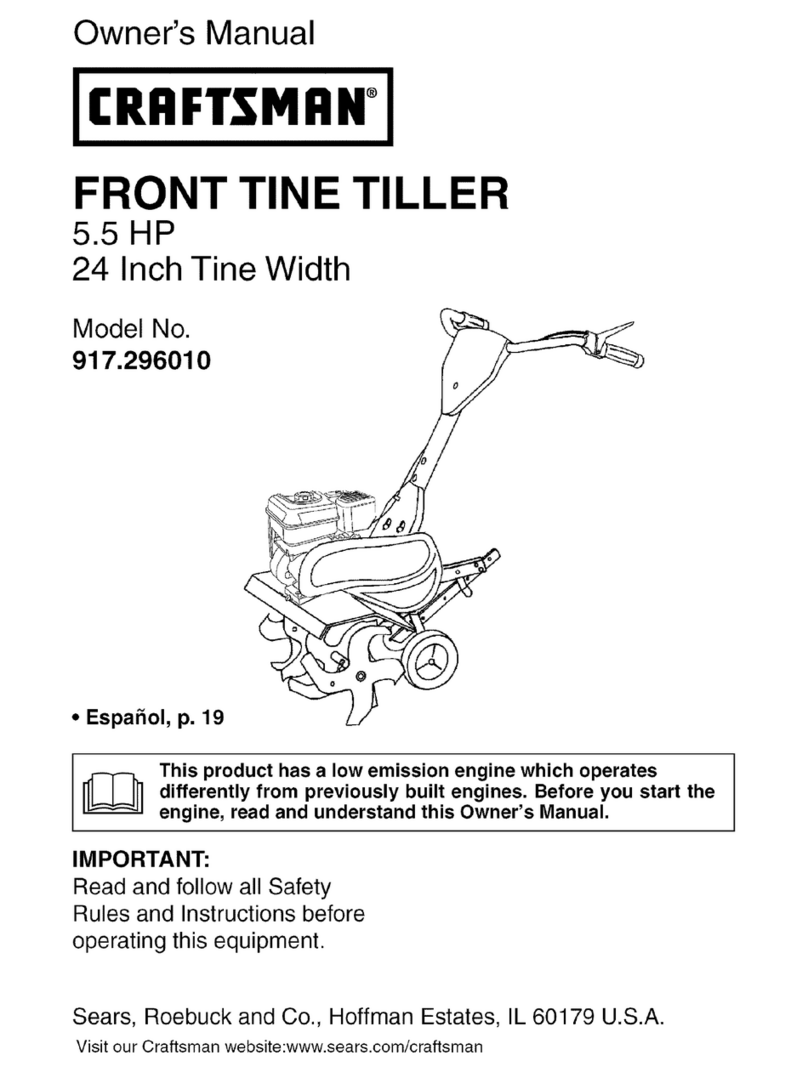
Craftsman
Craftsman 917.296010 owner's manual
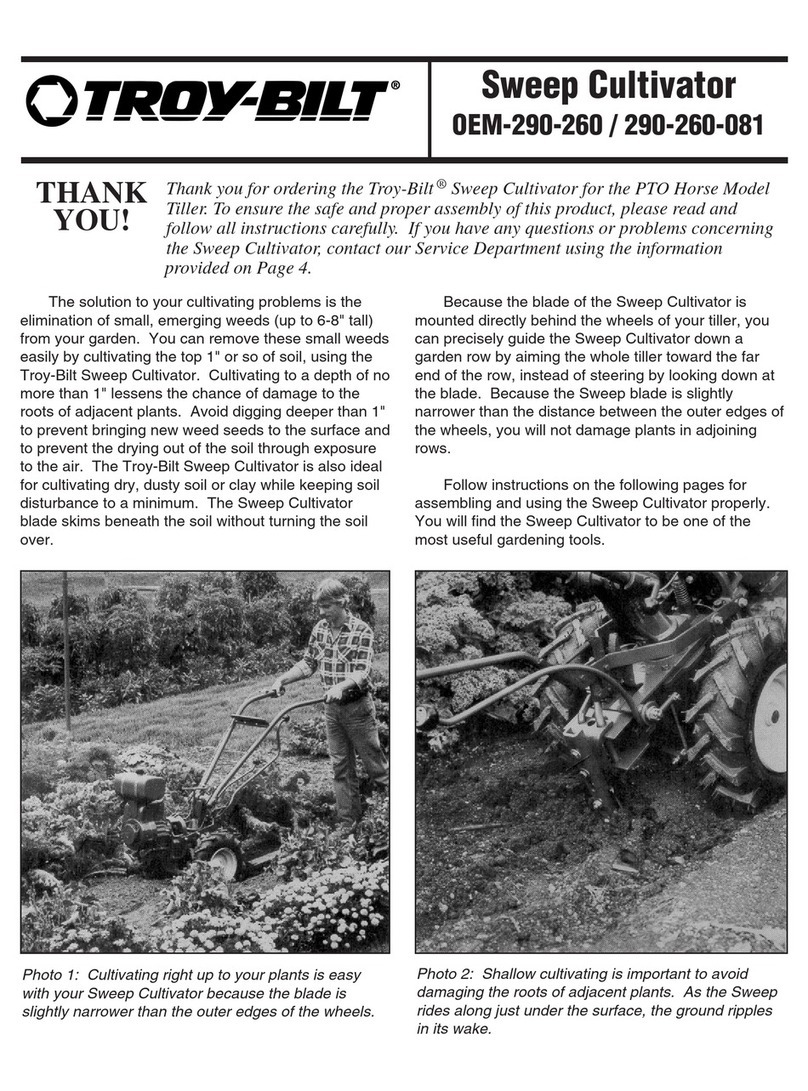
Troy-Bilt
Troy-Bilt OEM-290-260 Operator's manual
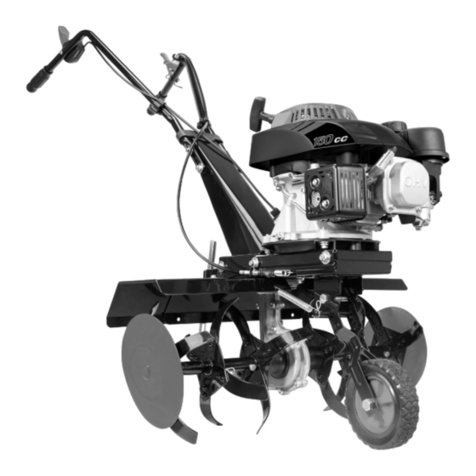
Scheppach
Scheppach MTP560 Translation from the original instruction manual
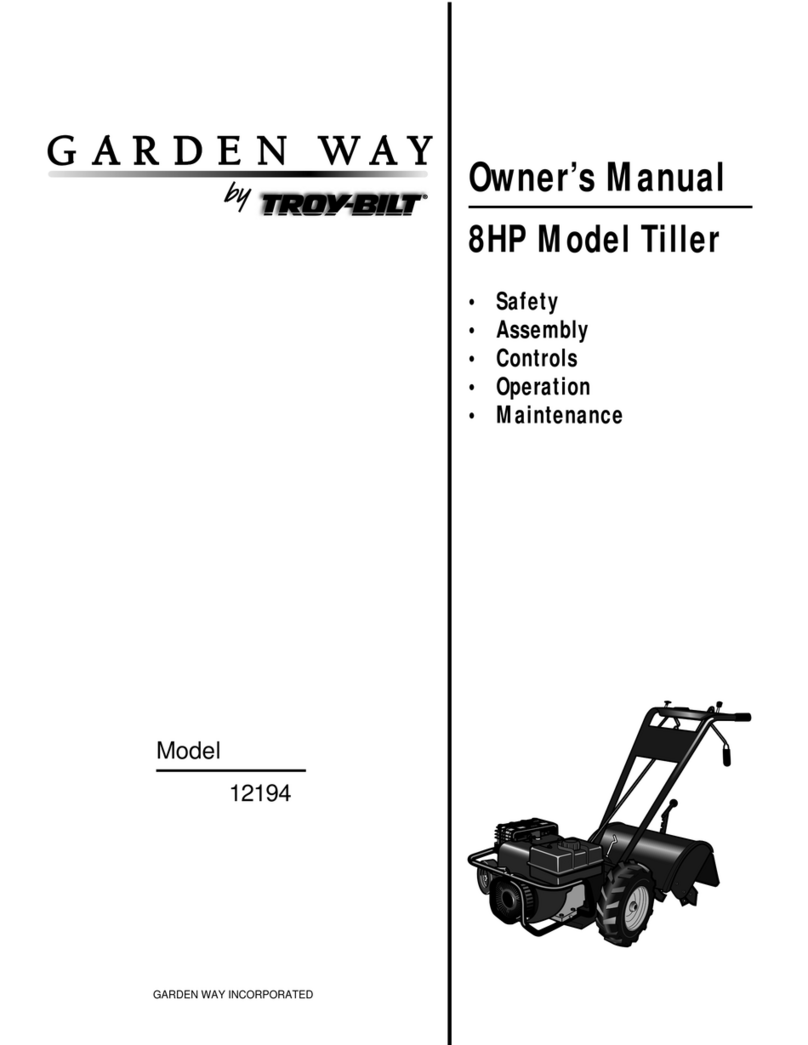
GARDEN WAY
GARDEN WAY 12194 owner's manual
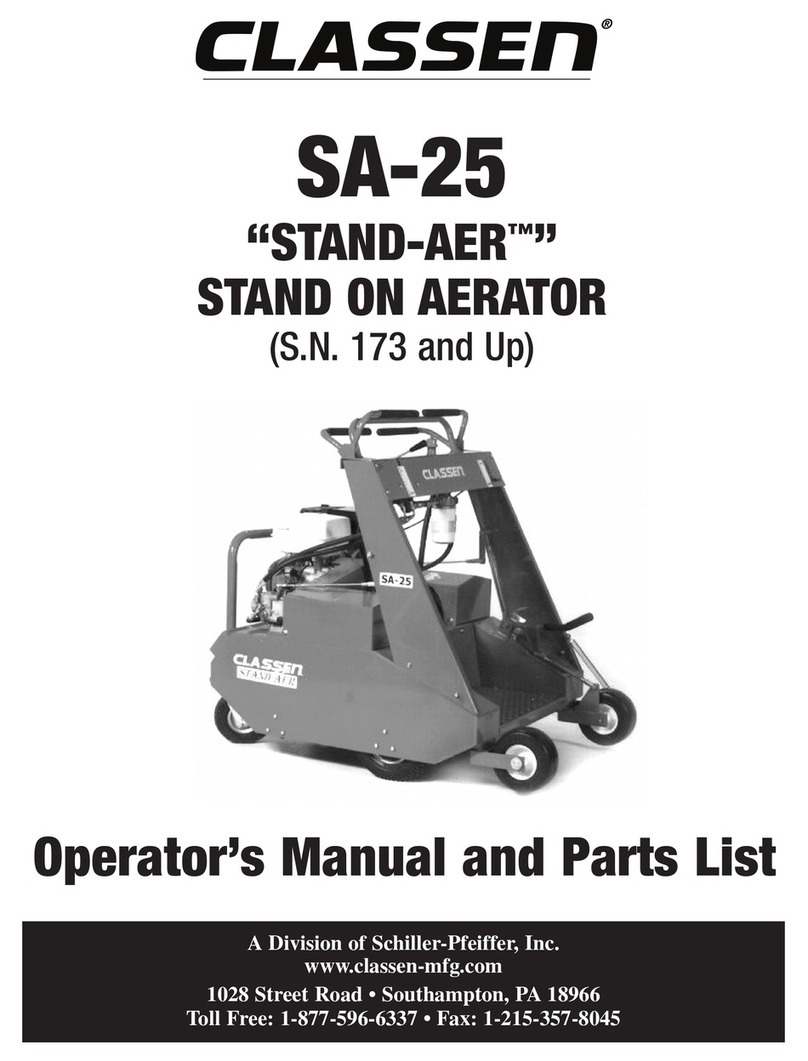
Classen
Classen STAND-AER SA-25 Operator's manual and parts list
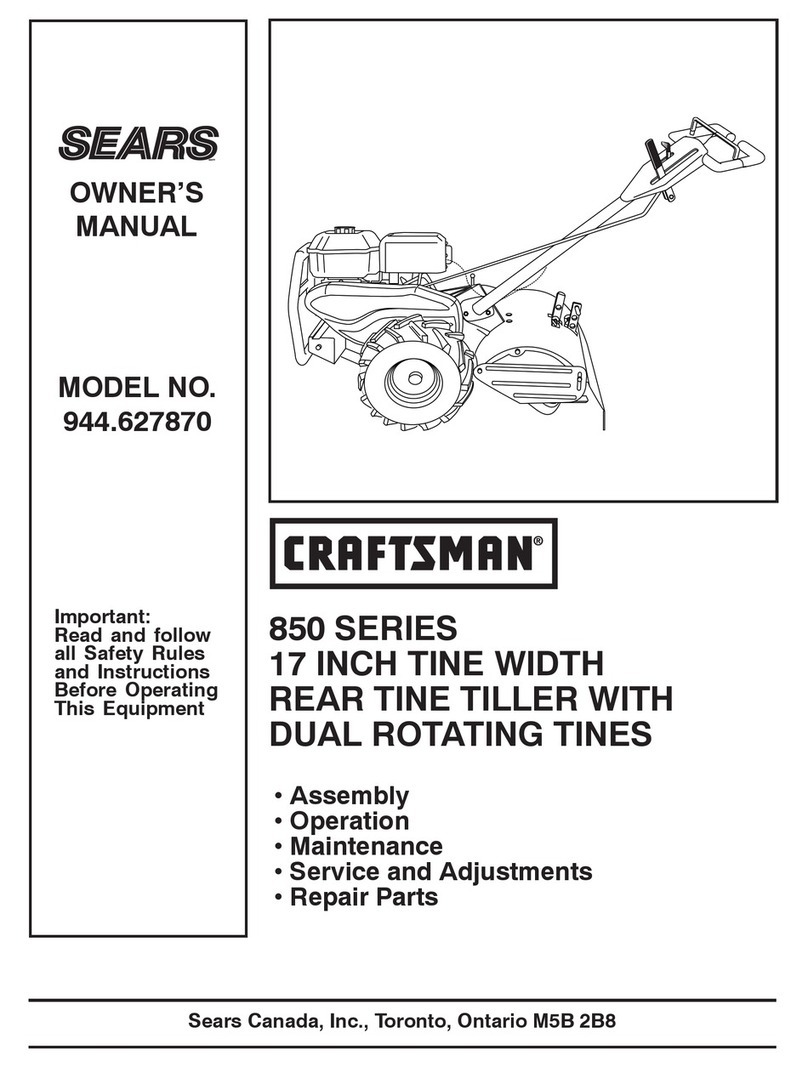
Craftsman
Craftsman 850 Series owner's manual

DR
DR PILOT 2 Safety & Operating Instructions

Altrad
Altrad ATIKA BH 1400 N Original instructions, safety instructions, spare parts

WIL-RICH
WIL-RICH 2500 Operator's manual

Viking
Viking HB 685 instruction manual
